Last week I spent three days visiting Angkor Wat and the nearby city of Siem Reap. I’d arrived two nights before and, in the span of 48 hours, had already become cynical and jaded about the entire experience. I’d spent the last three days getting ripped off by street vendors, restaurants, and taxi drivers, and was ready to snap. Feeling downtrodden by the constant scams and suffocating hordes of tour groups, I opted for a more natural, pure means of transportation the second day: a bicycle. For $1.50, I rented a fixed-gear Chinese bike for the day, threw on the muscle-tee I bought that morning, and started off for the Angkor temples north of Siem Reap.
The city of Angkor contains over 1,000 ancient stone temples, dating back over ten centuries. Built using stones dragged by elephants from mountains miles away, it is both the biggest pre-industrial city in history, spanning 1,000 km in its heyday, and home to the largest religious structure in the world – Angkor Wat, the famous temple depicted on the Cambodian flag. Once the capital of the great Khmer empire, Angkor was home to over a million people – an impressive feat in 1,200 AD. Despite it’s shortcomings (to which I am an active contributor), it’s an amazing sight to see.
Taking a bike turned out to be the right decision, until everything went wrong. Rapt by the beauty of my surroundings, I didn’t notice the oncoming tuk-tuk. To avoid a crash, I veered off the road, over an embankment, and almost into the woods, before regaining my bearings. The hog, however, suffered a debilitating flat tire, which really let the proverbial wind out of my sails. Two miles from the nearest outpost, I began the long midday march back to civilization. After getting a couple “man, that sucks” looks from passing tourists, help came in an unlikely form.
Just out of sight from the tourist loop, rural farming villages populate the area around Angkor. These are some of the poorest communities in Cambodia, and, despite living at the foot of the temples, the residents see very little of the wealth generated by tourism. You would never find them unless you know where to look, or, in my case, of few of the locals see you walking with a flat tire and take pity. About 15 minutes into my trek, three Khmer kids rode out of the woods on their bikes, assessed the situation, and brought me to a hut a quarter-mile off the main road. One spoke very basic English – just enough let me know they could help. When we got there, the kids went to work on my bike, peeling out the inner tube with a tire-iron, locating the hole, sanding it down, and sealing it with a patch and some rubber cement. In the process, the chain detached, so they got out the screwdriver, took it apart, and re-attached it to the gear. To top it off, the English-speaker showed me a temple past the outpost that had been shot up and destroyed by the Khmer Rouge back in the 70’s. I gave them all the money in my wallet, which amounted to $5 and change – equivalent to a week’s pay, but not satisfactory, given the amount of misery I was spared. I went back to change more money at another temple, but when I came back, they were gone.
In reality, a tourist like me with a flat tire is worth a week’s pay or more. But in an environment polluted with tourists where genuine or authentic experiences are necessarily non-existent, the experience felt as close to real as one can get in a place like Angkor Wat. Tourism is the lifeblood of Siem Reap, and supporting it is not in itself a bad thing. Unfortunately, at then of the day, if the community that fixed my bike sees a few pennies of the hundred or so dollars I spent that week, I would be surprised. A quarter of it will go to the Sokimex, the Cambodian oil conglomerate that operates Angkor, a few more dollars to the vendors, who in turn pay the police, and the rest goes to the government, which has other interests at heart. But this was a transaction that stripped out the middlemen, benefiting the people that most deserve it, and it felt pretty good. In the end, the karmic wheel took an ironic turn in my direction.

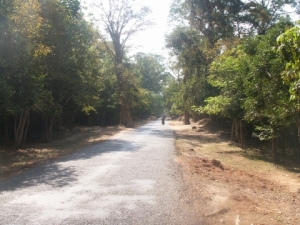
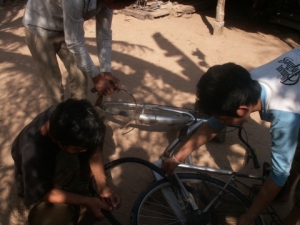
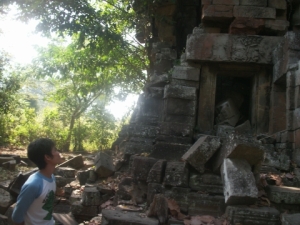
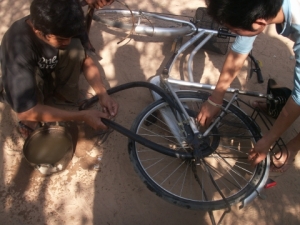
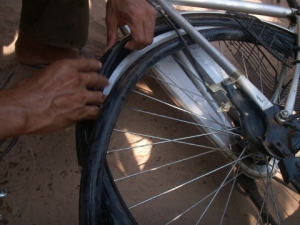

Nice to read that, despite the negative impact of tourists like you, those kids still helped you. It may have been easier for them to ignore your trouble or even make your trek more difficult.